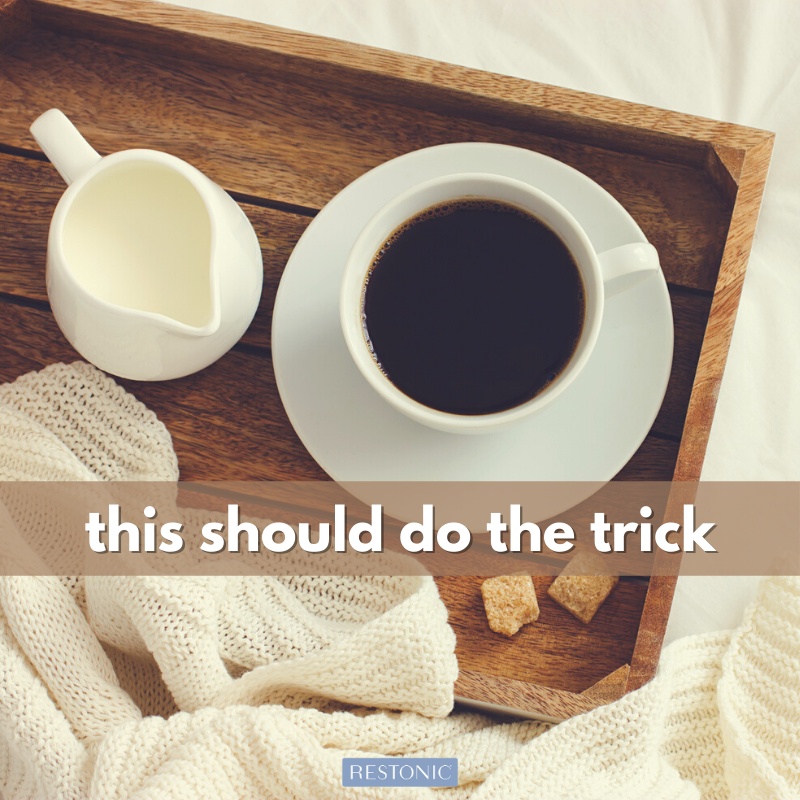 Ready to get healthy? Let’s start with a nap!
Ready to get healthy? Let’s start with a nap!
When we’re young, naps are an essential part of our lives, helping our bodies rest and heal and grow. As we grow older, it’s almost frowned upon in our workaholic, North American culture. Napping can sometimes be seen as laziness or lack of ambition instead of a chance to rejuvenate to do better work afterward.
According to Harvard Medical School, ”British researchers reported results of a study that compared getting more nighttime sleep, taking a nap, and using caffeine as ways to cope with the afternoon hump. The nap was the most effective.”
The history of napping
Sleeping in one solid chunk of time is unique to humans. Most animals sleep in different phases throughout a 24 hour period. Earlier humans followed suit, sleeping in various patterns throughout the ages but, for the most part, we now sleep monophasically – one solid block of time in a 24 hour period. The simple reason is that our more organized and regimented lifestyles simply can’t accommodate widespread daytime napping.
Try as we do to avoid giving into a daytime nap, it’s still hardwired into our biology. Studies show that when people are put into an environment that lacks any indication of time, they naturally fall into the biphasic (one large rest with a smaller subsequent rest) sleep pattern.
A good night’s sleep is still essential to our health, but a short nap during the day can do a lot to benefit our health and our lives – much better than a cup of espresso or an energy drink.
 The benefits of napping
The benefits of napping
Studies show that napping offers many benefits. These are just a few:
- Increased alertness. A study by NASA found that a 40 min nap increased alertness by 100% for study participants.
- Heightened creativity. Neuroscientists at City University of New York found that napping boosts sophisticated memory, which helps us see big picture ideas and be more creative.
- Improved health. A study of Greek adults found that napping at least three times a week for 30 minutes or more was associated with a 37% lower risk of death from heart disease.
- Enriched memory. During sleep, recent memories are transferred to the neocortex, where long term memories are solidified and stored.
How long to nap
The amount of time you spend napping impacts the benefits you may receive when you wake up. Nap too long and it may be counterproductive to what you’re trying to accomplish.
- Power nap (10 – 30 min). A power nap is ideal for a quick boost of energy and alertness without the groggy “hangover” effect that often accompanies deeper sleep.
- Afternoon siesta (60 min). While you’ll have some grogginess after waking up, this length of nap allows you to enjoy slow wave sleep. This type of sleep is best for improving memory (facts, faces, names).
- Deep, healing nap (90 min). This is a full cycle of sleep, which leads to better procedural and emotional memory and creativity. Because you’re getting a full cycle of sleep, you’ll typically avoid the grogginess upon waking as well.
 If you do feel the need for that extra caffeine boost, take a shot of espresso (or drink a cool cup of coffee) before you lay down for your 20-minute power nap. Coffee takes approx. 20 minutes to travel through your system and can provide a little kick when you’re waking from your nap. But coffee is a double edged sword and can affect your quality of sleep at night. Consider shutting off the coffee stream before 2 pm. Lasting energy comes from a combination of quality sleep and regular napping.
If you do feel the need for that extra caffeine boost, take a shot of espresso (or drink a cool cup of coffee) before you lay down for your 20-minute power nap. Coffee takes approx. 20 minutes to travel through your system and can provide a little kick when you’re waking from your nap. But coffee is a double edged sword and can affect your quality of sleep at night. Consider shutting off the coffee stream before 2 pm. Lasting energy comes from a combination of quality sleep and regular napping.
The key to benefit from naps is the hidden healing that goes on while we sleep – we have to make the time so they can happen. It’s easy to get caught up in our daily routines and think that taking a nap will take away from the work that we need to do. Numerous studies have proven the exact opposite. A short 10 – 30 min nap can boost productivity and alertness, which can make your afternoon just as productive as your morning.
Whether you lay your head down on your desk or sneak out to your car on your lunch break, taking the time to get some shut eye can have a profound impact on your life. The following tips can make it easier to catch a quick snooze when you need it.
- Be consistent. Try to keep a regular nap schedule to train your body to be ready to nap around the same time every day.
- Make it quick. Set the alarm on your phone for 30 minutes or less so you don’t risk oversleeping and waking up groggy instead of rejuvenated.
- Use music. Create a relaxation playlist to help your mind know it’s time to rest.
- Go dark. Blocking out the light helps you fall asleep faster and stay asleep. Nap in a dark room or wear an eye mask.
- Stay warm. Your body temperature drops while you snooze so be sure to keep blankets nearby to stay cozy.
Rest well & wake up ready to go!
Better sleep gives rise to better mornings, bringing your goals into focus and dreams within reach. Hungry for more sleep info? Dig into these posts:
Eager for more sleep info you can really use?
Join our community
Facebook
and let's continue the conversation.
We'd love to hear what you have to say!
This blog does not provide medical advice. It is intended for general informational purposes only and does not address individual circumstances. It is not a substitute for professional medical advice, diagnosis or treatment and should not be relied on to make decisions about your health. Never ignore professional medical advice in seeking treatment because of something you have read on Restonic.com. If you think you may have a medical emergency, immediately call your doctor or dial 911.

